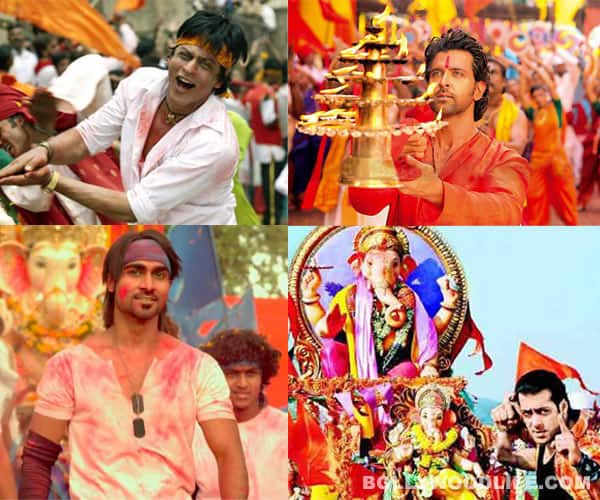Ganesha Chaturthi
Ganesha Chaturthi is the Hindu festival celebrated in honour of the elephant-headed god, Ganesha. This is a very auspicious day celebrated to pray to the god so that every new activity that is started is successfully completed without any obstacles (Vighna = Obstacle).
In India, Ganesha Chaturthi is primarily celebrated at home and in public by local community groups in the western states of Maharashtra,Gujarat and Goa and the southern states of Karnataka,Kerala, Andhra Pradesh, Telangana, and Tamil Nadu
Lord Vinayaka, Ganesh ji, Ganpati ji, Vinayaka is the darling of the masses. Ganesh Chaturthi brings people of all religion, caste and creed together.
Ganesh Chaturthi is celebrated with great devotion all over India. People bring home murtis (Idols) of Lord Ganesha and celebrate the festival by worshiping the Lord in a special way for a day and a half, 3 days, 5 days, 7 days or 11 days depending on the family tradition and commitment of each individual.
On the last day of worship the idol is taken out in a colourful and musical procession to be immersed traditionally at a beach.
On the last day of worship the idol is taken out in a colourful and musical procession to be immersed traditionally at a beach.

Chaturthi (Hindi चतुर्थी) means "fourth day" or "fourth state". Celebrations are traditionally held on the fourth day of the second fortnight (Shukla Chaturthi) in the month of Bhaadrapada in the Hindu calendar, usually August or September in the Gregorian calendar. Badrapad corresponds to Virgo (simha/avani-tamil) in solar calendar. The festival generally lasts ten days, ending on the fourteenth day of the fortnight (Anant Chaturdashi).
The festival is celebrated by families at home, by people at their places of work and in public. The public celebration involves installing clay images of Ganesha in public pandals (temporary shrines) and group worship. At home, an appropriately-sized clay image is installed and worshipped with family and friends. At the end of the festival, the idols are immersed in a large body of water such as the sea, river or a lake. The clay idols disintegrate over time in the water.

It is celebrated throughout India, especially in Maharashtra, Andhra Pradesh and Telangana. There is a grand celebration in the state of Maharashtra by traditional instrument called dhol and tasha. It is also celebrated in the other parts of India such as Gujarat,Karnataka, Tamil Nadu, Kerala,Goa, Odisha, Madhya Pradesh, Chhattisgarh and other parts of western and southern India.Abroad, Ganesha Chaturthi is observed in the Terai region of Nepal and by the Hindu diaspora in the United States, Canada and Mauritius.
Public Preparations for the festival begins months ahead. These pandals are usually funded by local residents and are collected through fairs and workshops.The idol making in Maharashtra usually begins with"Padya pooja" or worshipping the feet of lord ganesh. The idols are brought to "pandals" or temporary structures usually 15–20 days before. At home the festival begins with the selection and installation of a clay murti (idol). Families decorate a small, clean corner with flowers and other colourful items before installing the idol. When the idol is installed, it and its shrine are decorated with flowers and other materials.

In preparation for the festival, artisans create clay models of Ganesha for sale. The idols range in size from 3⁄4 inch (1.9 cm) for homes to over 70 ft (21 m) for large community celebrations. The date for the festival is usually decided by the presence of chaturthi thithi. The festival is held during"Bhadrapada madyahanaa purvabaddha". If chaturthi thiti begins at night on previous day and gets over by morning on next day then the next day us observed as vinayaka chaturthi. In the consecration ceremony, a priest performs a Prana Pratishtha to invite Ganesha into the idol. This is followed by the 16-step Shodashopachara ritual, (Sanskrit: Shodash, 16; Upachara, process) during which coconut, jaggery, modaks, durva grass and red hibiscus flowers are offered to the idol. Throughout the ceremony, hymns from the Rigveda, the Ganapati Atharvashirsa, the Upanishads, and the Ganesha stotra (prayer) from the Narada Purana are chanted. Aartis are performed with friends and family, typically in the morning and evening

At homes in Maharashtra, families install small clay statues for worship during the festival. The idol is worshiped in the morning and evening with offerings of flowers, durva (strands of young grass), karanji and modaks. The worship ends with the singing of an aarti in honour of Ganesha, other gods and saints. In Maharashtra the Marathi aarti "Sukhakarta Dukhaharta", composed by Samarth Ramdas in the 17th century, is sung. Family traditions differ about when to end the celebration. Domestic celebrations end after 1, 11⁄2, 3, 5, 7 or 11 days, when the idol is brought to a body of water (such as a lake, river or the sea) for immersion. Due to environmental concerns, a number of families now avoid bodies of water and let the clay statue disintegrate in a barrel of water at home. After a few days, the clay is spread in the home garden. In some cities a public, eco-friendly process is used for the immersion. In Maharashtra, Ganeshotsav also incorporates other festivals, namely Hartalika and the Gauri festival, the former is observed with a fast by women on the day before Ganesh Chaturthi whilst the latter by the installation of idols of Gauris.

In Goa, Ganesh Chaturthi is known as Chavath in Konkani and Parab or Parva ("auspicious celebration"); it begins on the third day of the lunar month of Bhadrapada. On this day Parvati and Shiva are worshiped by women, who fast. Instruments such as ghumots, cymbals and pakhavajs are played during the ceremonies. The harvest festival, Navyachi Pancham, is celebrated the next day; freshly-harvested paddy is brought home from the fields (or temples) and a puja is conducted. Communities who ordinarily eat seafood refrain from doing so during the festival
No comments:
Post a Comment